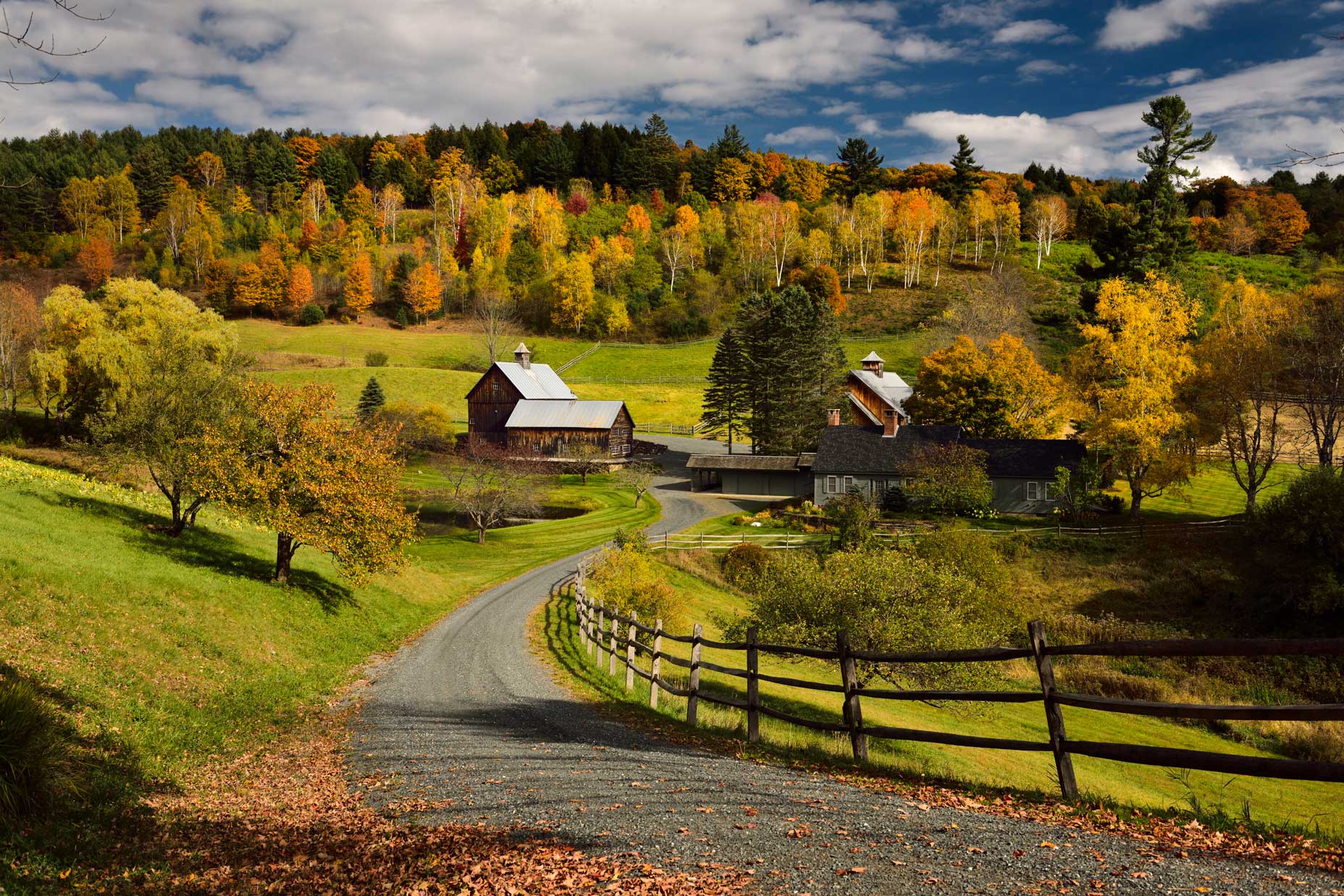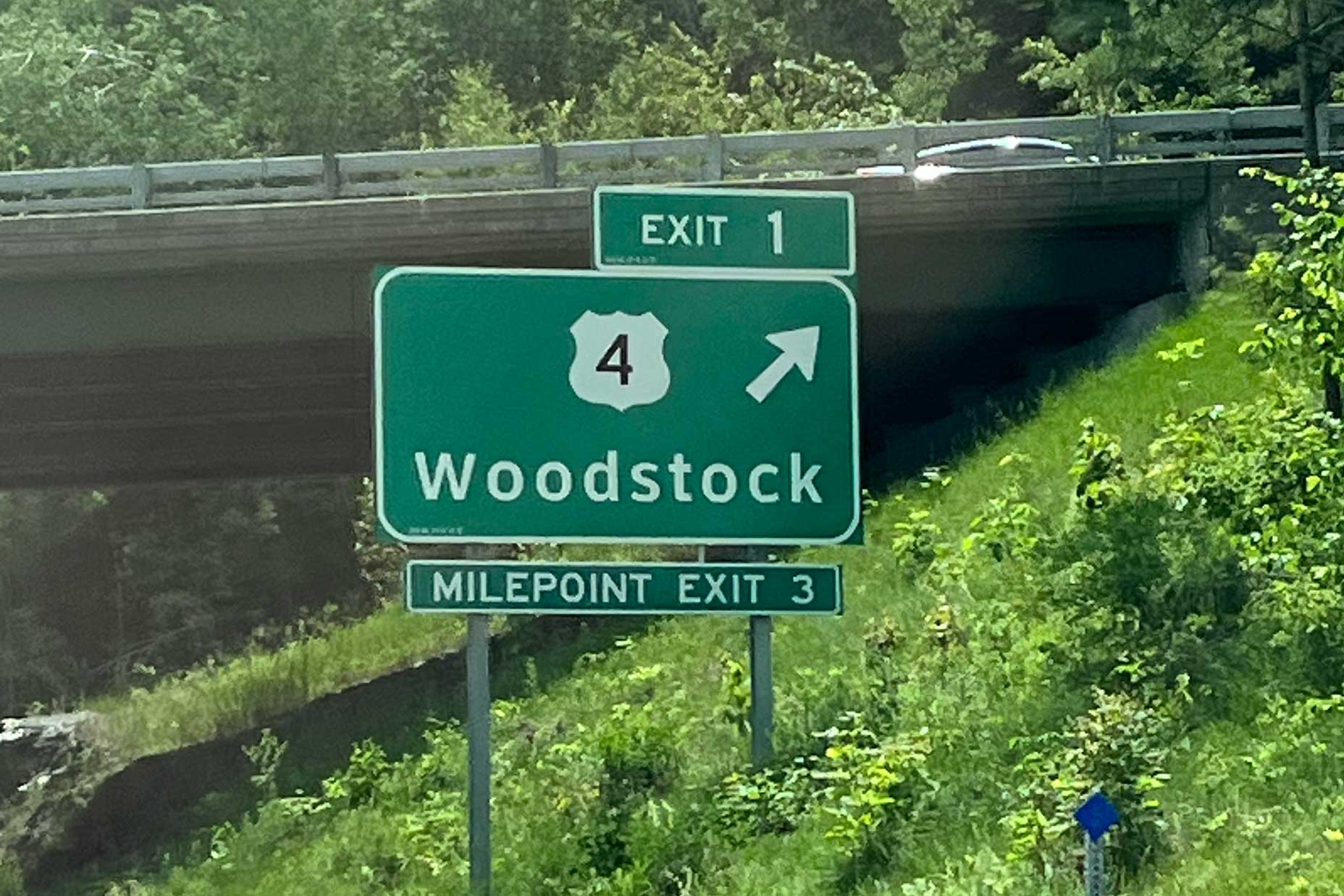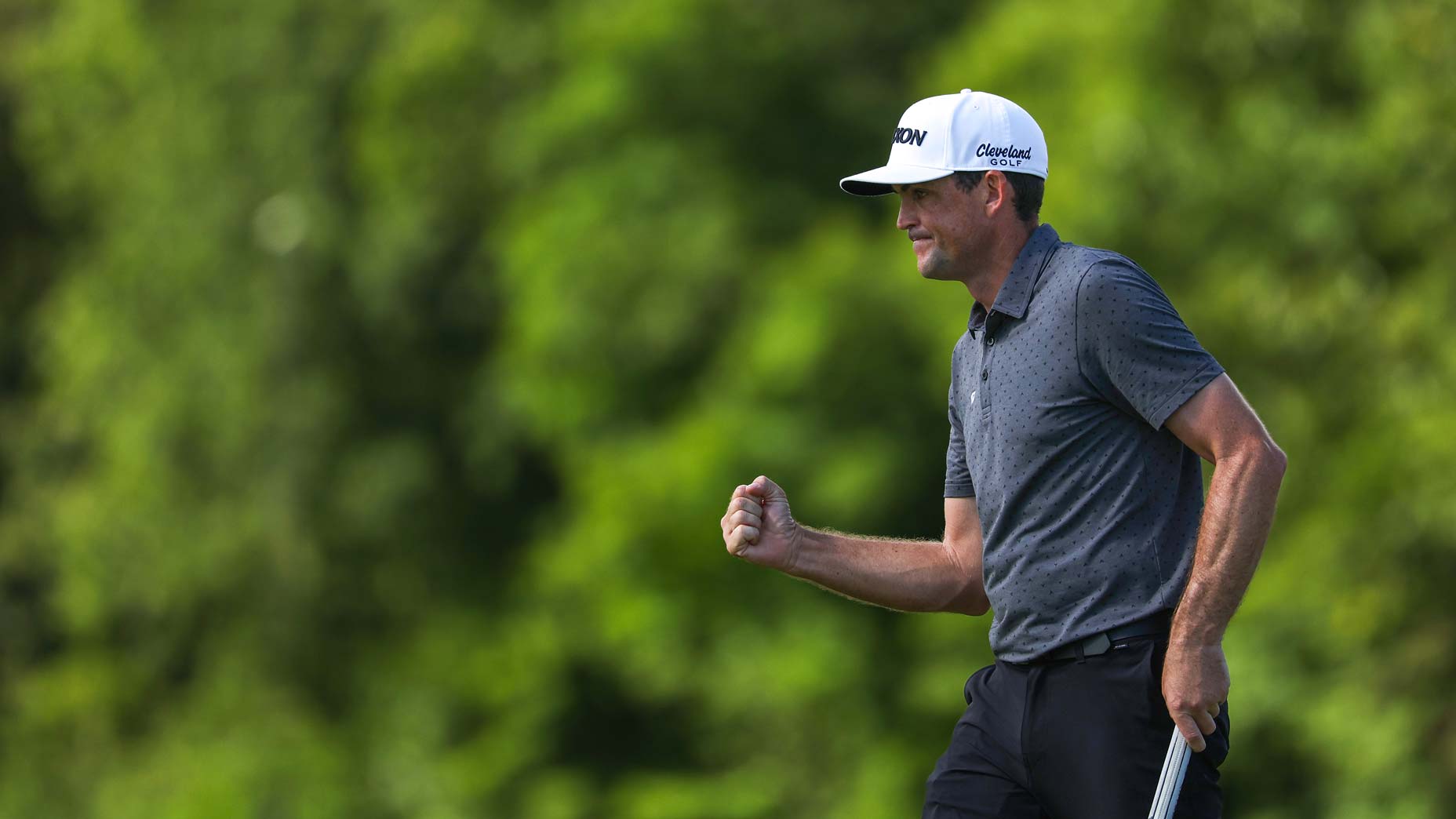Hayden Springer, who came to Bermuda at No. 125 in the FedEx Cup, shot a 6-under 65 for a share of the lead at the Butterfield Bermuda Championship.
Keegan Bradley’s dreams and nightmares are next-door neighbors

Keegan Bradley’s dream win at the Travelers Championship was a reminder that there aren’t many professional golfers quite like him.
The post Keegan Bradley’s dreams and nightmares are next-door neighbors appeared first on Golf.
Keegan Bradley’s dream win at the Travelers Championship was a reminder that there aren’t many professional golfers quite like him.
The post Keegan Bradley’s dreams and nightmares are next-door neighbors appeared first on Golf.
Early Sunday morning, Keegan Bradley woke up to a nightmare.
Two nightmares, really.
He was sleeping on a one-shot 54-hole lead going to the final round of the Travelers Championship. But that sleep, he admitted later, was rudely interrupted.
First Bradley woke with a start after hitting several sleep-shots out of bounds. Ugh. Next he awoke to the alarming vision that Justin Thomas — who began the day at 14 under, seven shots off Bradley’s lead — had just shot 10-under-par 60. In other words, Bradley experienced golf’s version of the world’s two most common nightmares: falling (down the leaderboard) and being chased (ferociously, from seven shots back).
But wow, how the day became a dream. By Sunday evening, as Bradley began his walk toward the 18th green, he was in possession of a three-shot lead. He raised his arms to the crowd, soaking in the cheers and chants, pumping his fist, taking full advantage of the security that comes with a few insurance strokes. The only thing left was a two-putt and a party.
GROWING UP IN VERMONT (with stints in New Hampshire and Massachusetts), Bradley had dreamt of becoming a New England sporting legend. The Travelers — held in Cromwell, Conn., just outside Hartford — was the first pro golf event he attended in person. Now here he was, grinning wide at the crowd. Sometimes athletes talk about a winning moment feeling like a blur. This felt like the opposite. Bradley looked keenly aware of just how special the moment was. He looked to the crowd and thrust his hands into the air like sponges, desperate to soak up the euphoria in the air, absorbing the unbelievable reality in real time, hopeful he could wring it out later and experience the feeling again.
In the minutes after his win, New England’s new golfing hero spotted, among the hundreds of texts, one from Michael Jordan. Another came in from Red Sox legend Tim Wakefield. A third was from Aaron Rodgers, which meant a lot, Bradley said, “even though he plays for the Jets now.”
And then there was his family. Bradley bear-hugged his kids and his wife, Jillian. He went through a post-round interview with CBS’ Amanda Renner with his son by his side and then the two executed a multi-step handshake, one of the moving moment’s most moving moments.
Bradley won his first major championship back in 2011 as a single man. Winning with his family? He said it doesn’t compare.
“For them to be able to feel the excitement of this and be here and feel it, I can’t put a price on that,” he said. “It’s just the greatest feeling.”
TO UNDERSTAND THE DREAM you need to understand a little bit about Woodstock. As chance would have it, I began my Sunday in a small town in east-central Vermont, where I’d spent the weekend at a friend’s wedding. Bradley grew up in Woodstock, just two towns over from where I’d stayed and just 90 minutes on winding roads from my own small-town upbringing. He’s well-known at the golf course in Woodstock and he’s well-known at the courses I grew up playing and he’s well-known at every small-town course in between, too.
We drove through on the way in and on the way out, catching a glimpse of leafy, idyllic New England perfection. Woodstock has a population of 3,000 — some fraction of the crowd ringing the 18th green — which has been called the “prettiest small town in America.” It serves as bucolic wedding destination in the summer, snowy ski escape in the winter and a trip back in time in every season. It’s pretty far up there, too — a two-and-a-half hour straight shot up I-91 from TPC River Highlands.
“From where I grew up, this is like the South, down here,” Bradley said of Connecticut.
He describes his childhood fondly; Bradley was a competitive skier and golfer growing up in a family of competitive skiers and golfers. It’s hardly unique for a successful golfer to have grown up in a rural area, where space is abundant and golf is cheap and a kid really can hang out at the course, morning to night, and hone his game all the while. But Vermont? That’s hardly a hotbed for aspiring pros.
A decade ago, when Bradley made his PGA Tour debut and quickly became an unlikely major champion, a story made the rounds about how he’d spent a stint of his childhood living in a trailer park with his father, Mark. But Bradley thinks the story can be misconstrued as an illustration of family poverty. Instead, it showed what he and his father — an itinerant assistant golf pro at the time — had in abundance: adventure, determination and a dogged pursuit of Bradley’s golfing future. Squeezing his 6-foot-3-inch frame onto a bed fashioned over the table inside an RV, his 6-foot-5-inch father crammed into his own bunk nearby? That’s a different origin story than most Tour pros. But Bradley has relished that difference. He remains different.


It was in those years that Bradley began forming the chip that still rests atop his broad shoulders. Need proof? The first words of his first interview post-win were these, to Renner:
“This is for all the kids that grew up in New England who got to sit through the winters and watch other people play golf,” he said. In his press conference later, he expanded on that message. “This is for all the kids like me that grew up in winters and can’t play and would watch the kids from Florida and down south get better and compete and get invited to the biggest tournaments in the country that I was never invited to,” he said.
Think about that. In the wake of one of the most emotional wins of his life, Bradley’s mind went back to junior golf and the invitations he never got. Whether it’s a lesson he learned in Vermont, or in that trailer, or in mini-tour golf or sharing the South Florida fairways with Jordan, one thing is clear about that chip on Bradley’s shoulder: he likes it there.
TO UNDERSTAND THE NIGHTMARE, you need to understand the part of Bradley that has always struggled with golf.
Earlier this year I got an hour with him at the Players Championship, where he verbalized something I’d never heard another pro say in quite the same way.
“I’m an anxious person every day of my life and every second. So playing golf is hard for me,” he said. “It’s hard for me to go out and hit every shot. It’s hard to know that I’ve gotta play this course and hit four shots on 17, four shots off the 18th tee. This doesn’t come easy to me.”
Golf is difficult for everybody, of course, but I’d generally considered it easier for the pros because, well, they’re better at it. But achieving greater mastery of a game doesn’t guarantee a lighter mental load while playing it. That leads to a pre-shot routine like Bradley’s, which is twitchy and ritualistic and calls to mind another New England sports hero, Red Sox shortstop Nomar Garciaparra, whose pre-at-bat adjustments were, well, you can watch ’em here. Bradley’s approach is similarly unique. Not everybody likes it.
Bradley explained how much work it is to manage his stress, particularly when he’s playing in front of a local crowd. He knows that doesn’t make sense, because his family and friends like him the same “whether I shoot 80 or 60.” But he wants it for them and he wants it for himself, too, even though it’s hard. Maybe because it’s hard.
For Bradley, the joys of success in professional golf are close neighbors to its pure misery. One thing he said post-win was that he’d dreamt as a kid of playing in Fenway Park or Gillette Stadium in front of thousands of adoring fans. But he’s also told me that, after throwing out the first pitch at Fenway twice, he’s sworn off ever doing so again because of the anxiety it inspires.
Golf successes aren’t so different; even on Sunday he made it clear that the best part of the golf was the fact he didn’t have to play any more.
“It was a really stressful day. I’m so glad it’s over,” he said. His next sentence? “Today was a day I’ll remember for the rest of my life.”

THERE ARE MORE NIGHTMARES AHEAD, because competitive golf will keep being difficult for Bradley, even as he continues to compete at its highest level. That’s the consequence of caring as much as he does and being wired the way that he is. The PGA Tour is filled with neurotic solo acts, of course, but most hide their anxieties behind stoic masks. When Patrick Cantlay is playing well, he makes golf look simple. Bradley never does. Effortless isn’t on the menu.
The nightmares are scary because they’re grounded in reality. Sometimes pros do hit balls out of bounds, like he had in his dreams on Saturday night. Even an elite driver like Bradley. He had missed the cut at the U.S. Open just a week earlier, after all. He’s hardly invincible. And pros shoot 10 under par sometimes, too. If Thomas had fired 60 on Sunday, he would have posted a four-round score of 24 under par — one better than Bradley. His nightmares are well-calibrated.
BUT THERE ARE MORE DREAMS AHEAD, TOO. The first thing Keegan told Jillian as he came off the course was how much this had advanced his chances at making the Ryder Cup team. He’s up to No. 7 in the U.S. team’s standings. In terms of golfing priorities, nothing currently ranks higher.
Bradley’s back in the top 20 in the world now, too, jumping to No. 18 with his win, the highest he’s been in nearly a decade. He’s No. 5 in the FedEx Cup. His PGA Tour future is secure.
The key to this success isn’t just grit and desire, of course. It’s putting. Ever since the Jan. 1, 2016, belly putter ban, here’s how Bradley’s stats have looked:
Strokes Gained: Putting (by year)
2016: -.631 (183rd)
2017: -.216 (149th)
2018: -.358 (174th)
2019: -.516 (178th)
2020: -.683 (185th)
2021: -.548 (186th)
2022: .067 (88th)
2023: 0.458 (23rd)
Notice a sudden shift there? Bradley went most of his Tour career as a top-tier ballstriker and a bottom-tier putter. Suddenly he’s putting together a season where he’s above average in every facet of the game. At the Travelers he was No. 1 in strokes gained on approach and strokes gained with his putter. When you consider Bradley’s greatest strength is typically his driving, that’s an all-but unbeatable combination. He’s posited theories for the putting turnaround, reasons that involve a combination of AimPoint, experience and hard work. But he’s also keenly aware to thank the golfing gods for the gift of a hot putter; he and his caddie, Scott Vail, were captured on camera repeatedly bowing to their new-and-improved weapon.
“We just pay our respect. If the putter is working, I’ll do whatever to keep it going,” Bradley said. “We just bow and we say thank you.”
There’s no telling what’s next for Bradley. He’s now won twice this season. He’s logged a couple other top-fives, too. But before Sunday he’d gone eight tournaments without a top 10. His Ryder Cup dreams sit on a razor’s edge, with success on one side and failure on the other.
It’s the only place he knows.
The post Keegan Bradley’s dreams and nightmares are next-door neighbors appeared first on Golf.
